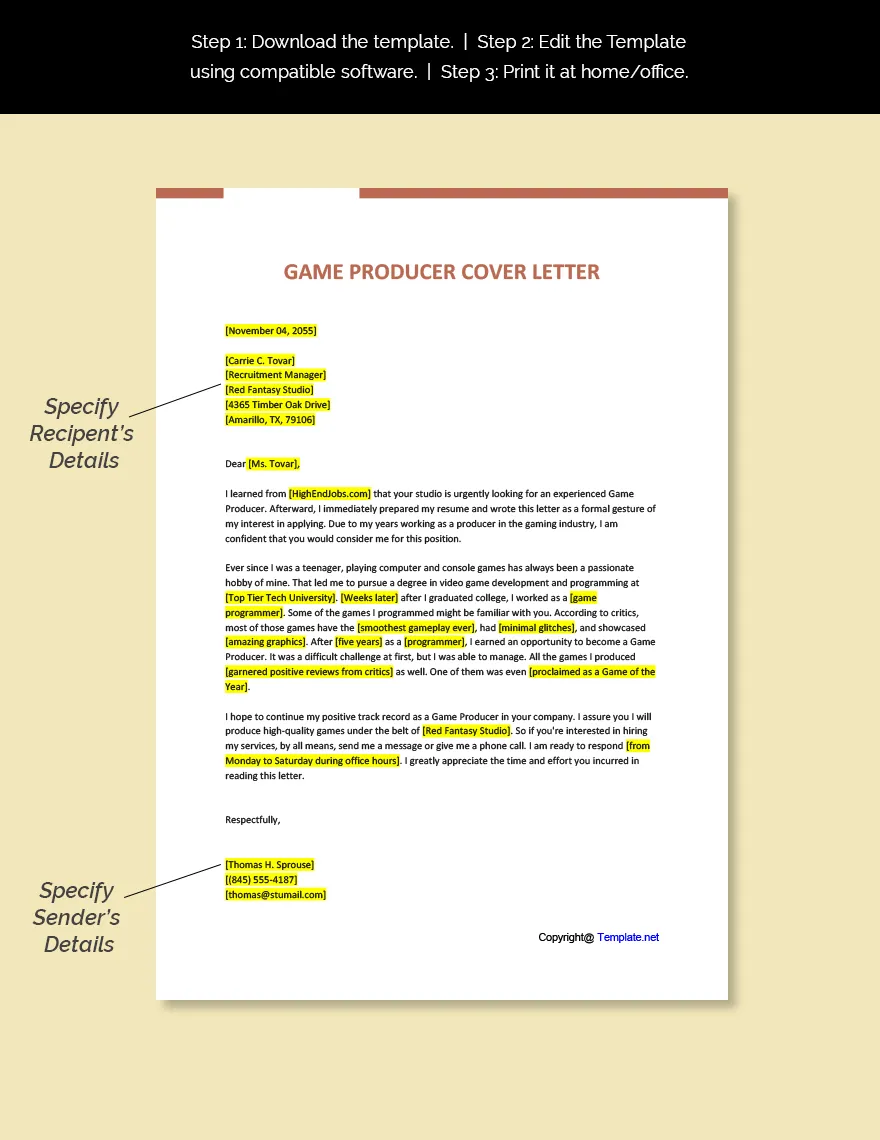What is a Game Artist Cover Letter?
A game artist cover letter is your first introduction to a potential employer, a crucial document accompanying your resume and portfolio when applying for game artist positions. It serves as a personalized message that allows you to highlight your relevant skills, experience, and passion for the role and the company. Unlike your resume, which provides a factual overview of your career, the cover letter is an opportunity to showcase your personality, communication skills, and enthusiasm for the specific job. It provides context and depth to your application, helping you stand out from other applicants.
Why is a Game Artist Cover Letter Important?
In a competitive field like game art, a well-crafted cover letter can be the deciding factor in whether you get an interview. It shows that you are serious about the position and have taken the time to learn about the company and tailor your application. A strong cover letter demonstrates your written communication skills, which are essential in many game development roles, as artists often need to communicate ideas, receive feedback, and collaborate with other team members. Many hiring managers use the cover letter to assess an applicant’s writing style and professionalism before reviewing their portfolio.
A cover letter can make a significant impact because it is a tool to go beyond what is on the resume and to showcase personality, interests and motivation. This will assist your application to stand out.
The Purpose of a Cover Letter
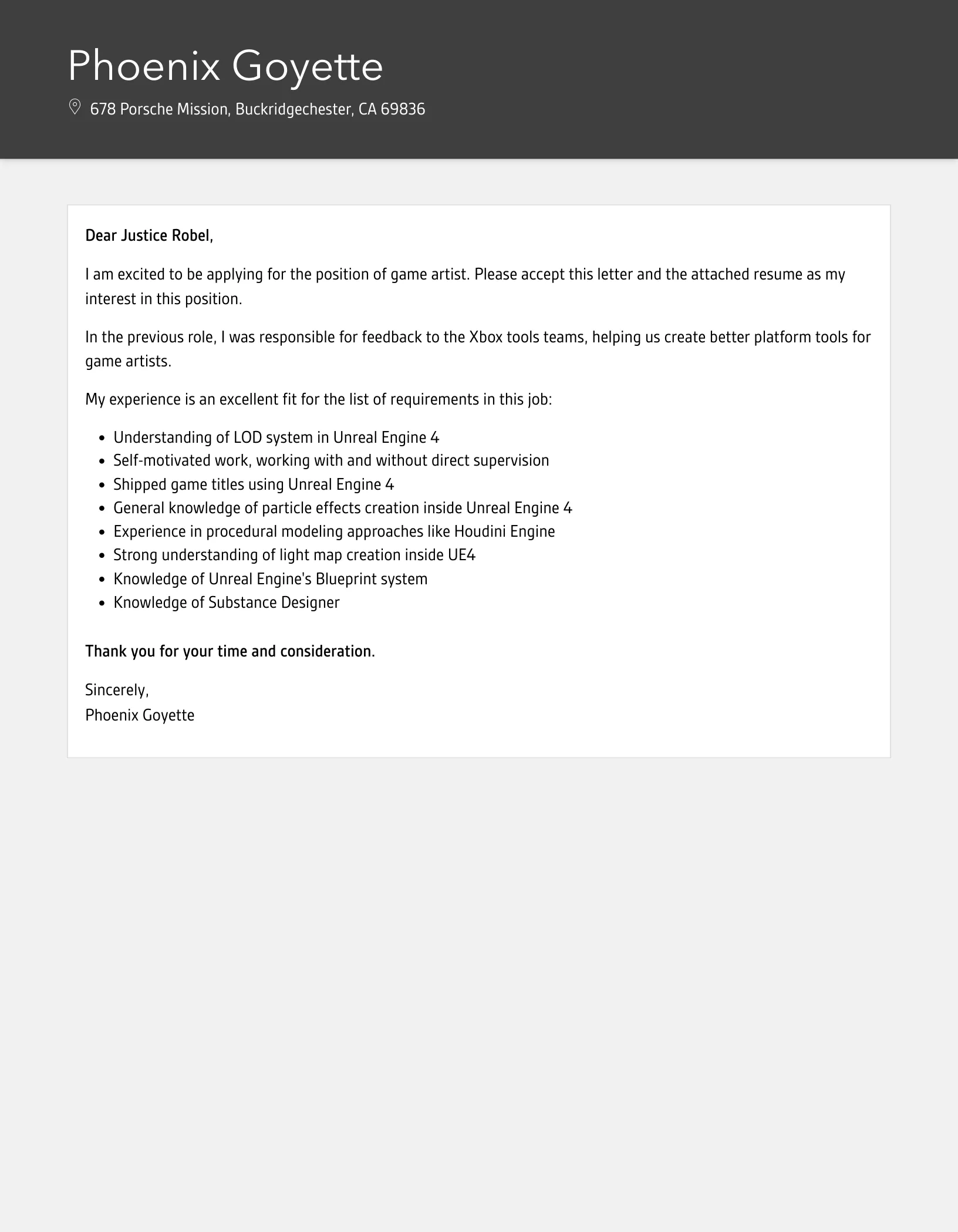
The primary purpose of a game artist cover letter is to persuade the hiring manager that you are the right person for the job. It’s a sales pitch for yourself, highlighting your unique value proposition and demonstrating why you’re a good fit for the company and the specific role. It also serves to clarify your career goals, express your genuine interest in the company, and provide a narrative that complements your resume and portfolio. Furthermore, the cover letter allows you to explain any gaps in your employment history or any unusual circumstances that might be relevant to your application.
Key Elements of a Compelling Game Artist Cover Letter
Contact Information and Salutation
Begin with your contact information, including your name, phone number, email address, and, optionally, your LinkedIn profile or online portfolio link. Following this, address the letter to the hiring manager or the specific person mentioned in the job posting. If a name isn’t provided, use a general salutation like “Dear Hiring Manager” or “Dear [Company Name] Team.” Avoid overly generic salutations as much as possible; personalized greetings show you’ve taken the time to research the company.
Highlight Your Relevant Skills and Experience
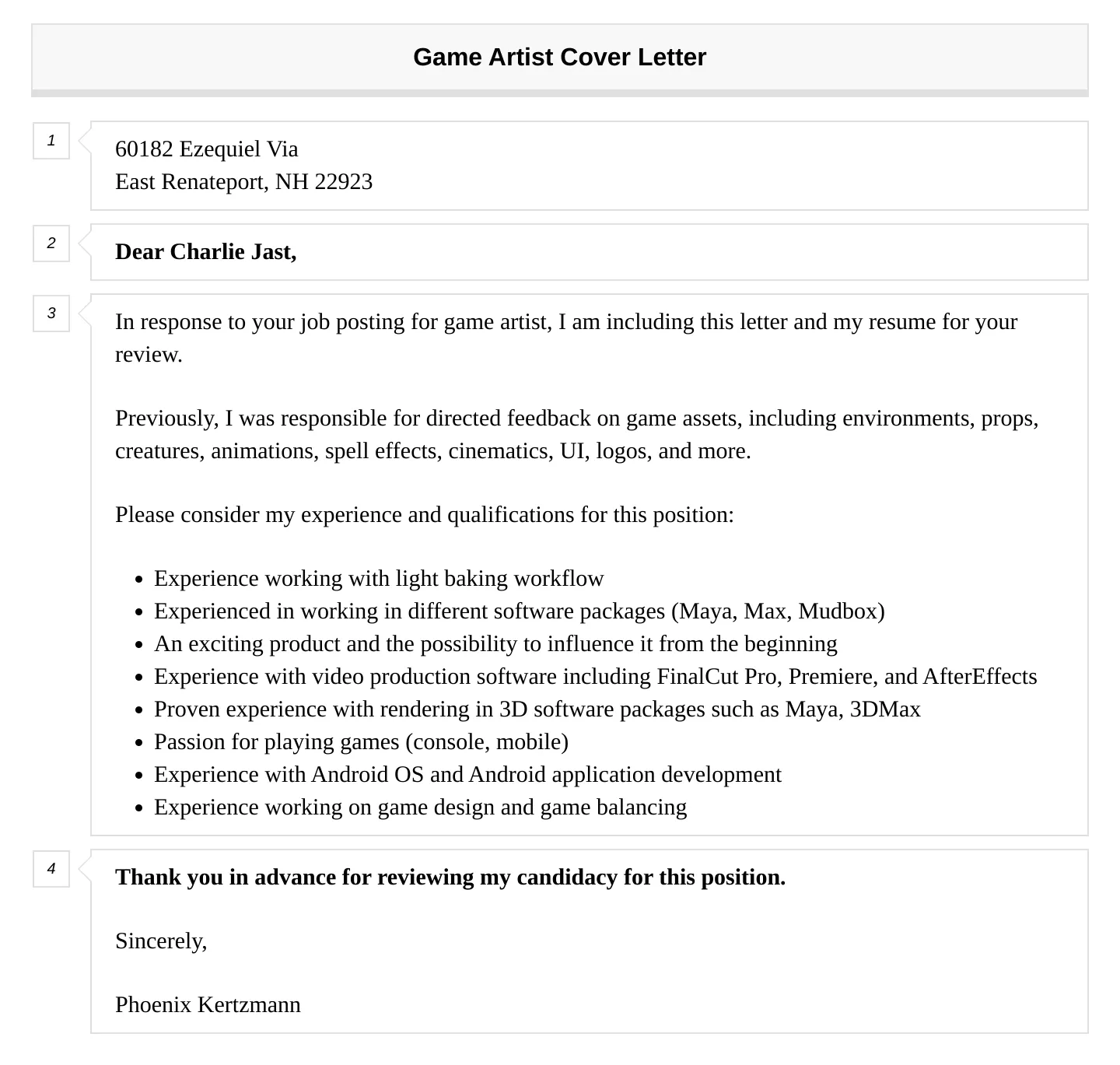
This is where you tailor your letter to the specific job description. Identify the key skills and experience the employer is seeking and provide specific examples from your past work that demonstrate your abilities. Mention specific software you are proficient in (e.g., Maya, 3ds Max, ZBrush, Substance Painter), as well as art styles, such as character design, environment art, or concept art. Quantify your achievements whenever possible, using numbers to showcase your impact (e.g., “Increased character animation efficiency by 15%” or “Created over 50 unique character models”).
Reference the job post to make sure you hit the key responsibilities that the position demands. Providing examples of past projects will help support this.
Showcase Your Portfolio and Projects
Your portfolio is the most important part of your application. In your cover letter, briefly highlight key projects from your portfolio that are most relevant to the job. Describe the project, your role, and what you accomplished. Mention any awards or recognition you received for your work. Make sure your portfolio website is easy to navigate, with high-quality images and videos of your best work. Include a direct link to your portfolio in both your cover letter and resume.
Make sure your portfolio is relevant to the job you are applying for.
Mention the Company and Role
Demonstrate that you have done your research. Mention the company’s name and, if possible, specific projects or games you admire. This shows your genuine interest and that you aren’t just sending out a generic cover letter. Briefly explain why you are interested in the specific role and how it aligns with your career goals. Show that you understand what the role entails and how you can contribute to the team.
Express Your Enthusiasm and Interest
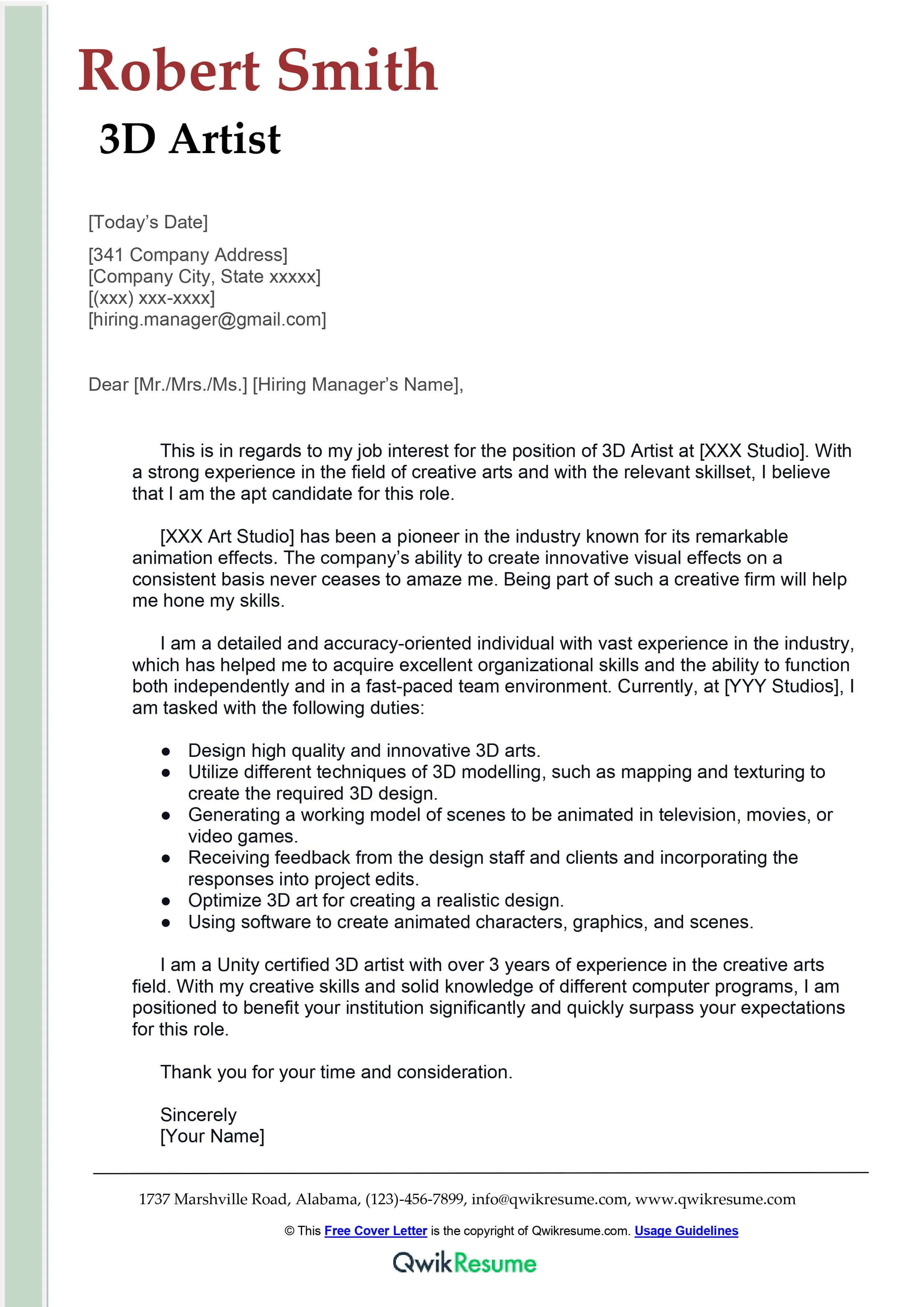
Convey your enthusiasm for the position and the company. Use strong, positive language to express your excitement about the opportunity. Briefly explain why you are drawn to this particular role and what you hope to achieve if hired. End with a call to action, such as expressing your eagerness for an interview and thanking the hiring manager for their time and consideration.
Formatting and Style Tips for Your Cover Letter
Length and Structure
Keep your cover letter concise and to the point. Aim for one page, typically around 250-400 words. Use a clear and easy-to-read format. Divide your letter into logical paragraphs with clear headings. Use bullet points to highlight key skills or achievements when appropriate. This will help the hiring manager easily find the most important information.
Professional Tone and Language
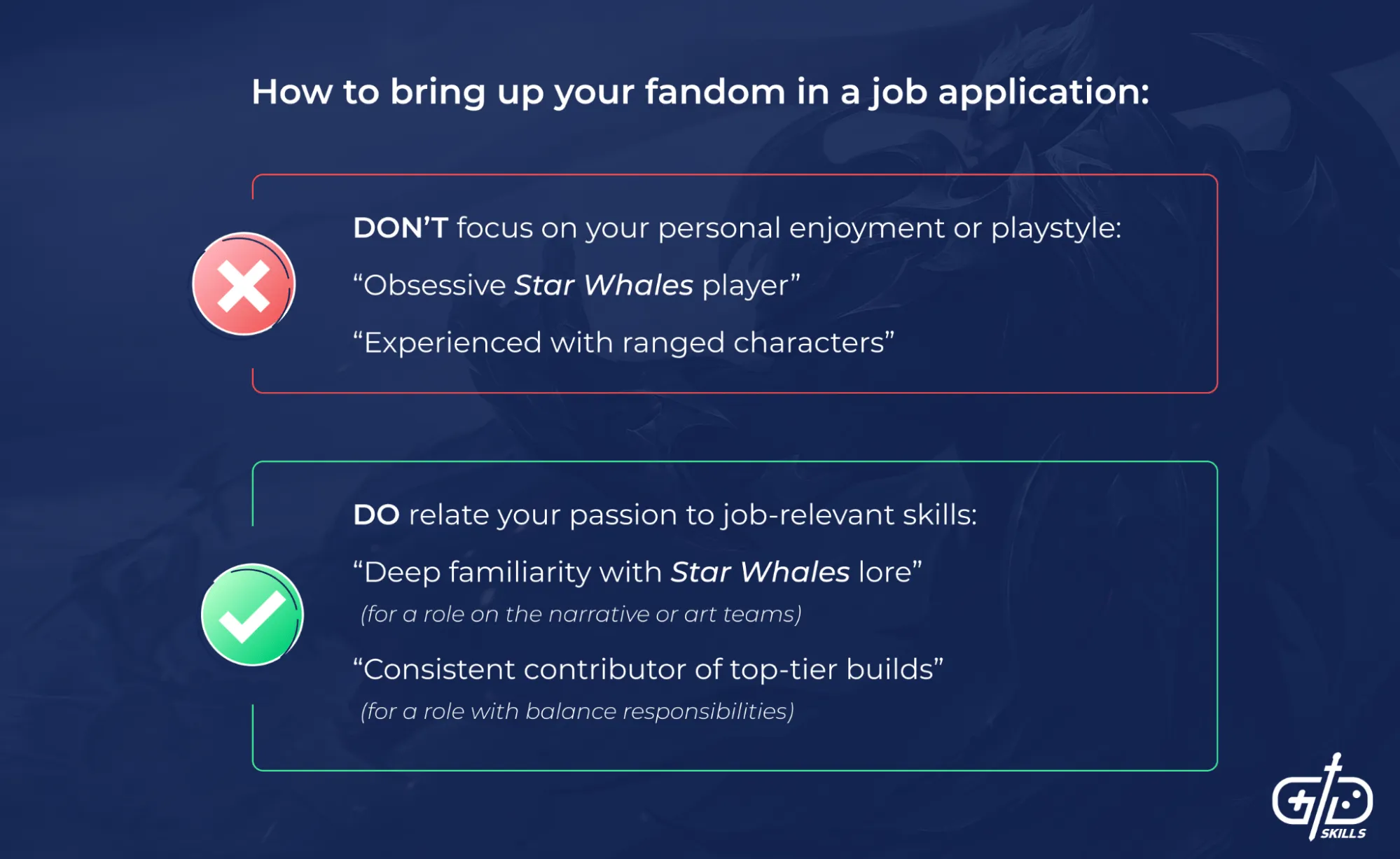
Maintain a professional and respectful tone throughout the cover letter. Avoid slang, jargon, or overly casual language. Use a formal greeting and closing. Proofread carefully for any grammatical errors or typos. Make sure your language reflects your professionalism and attention to detail.
Proofreading and Editing
Proofread your cover letter multiple times. Check for spelling errors, grammatical errors, and punctuation mistakes. Ask a friend or colleague to review your letter for clarity and accuracy. A polished cover letter is a sign of professionalism and attention to detail. These mistakes can negatively impact your application and can potentially cost you a job opportunity.
Tailoring Your Cover Letter to Specific Jobs
Researching the Company
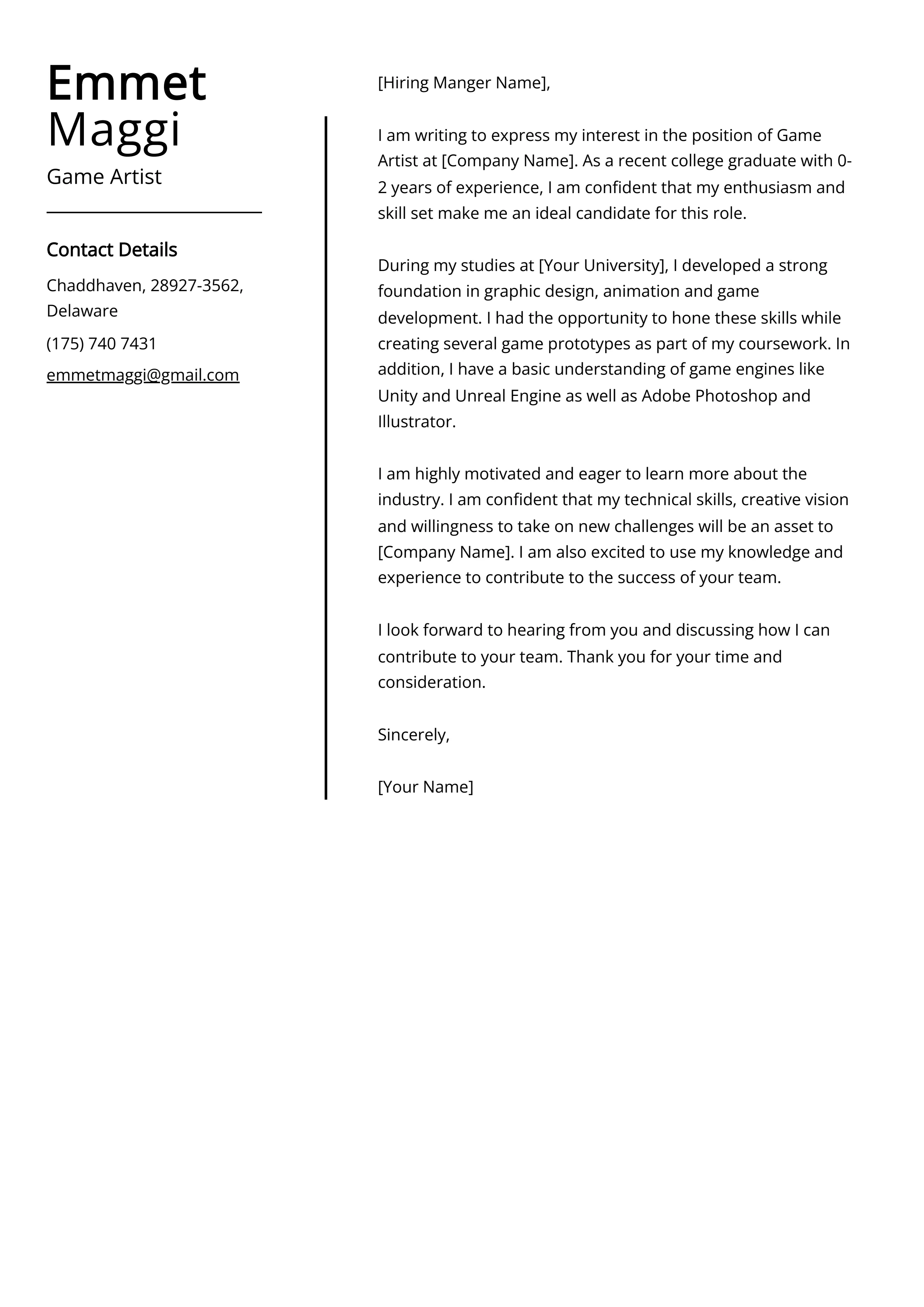
Before writing your cover letter, research the company. Visit their website, read their blog, and follow them on social media. Understand their mission, values, and the types of games they produce. This knowledge will allow you to tailor your cover letter to the specific company and demonstrate your genuine interest.
Matching Skills to Job Requirements
Carefully review the job description and identify the key skills and qualifications the employer is seeking. Then, tailor your cover letter to highlight your relevant experience and skills. Provide specific examples from your portfolio and past projects that demonstrate your ability to meet the requirements of the job. Use keywords from the job description to optimize your cover letter.
Using Keywords
Use keywords from the job description throughout your cover letter. This helps your application pass through applicant tracking systems (ATS) and ensures that the hiring manager can quickly see that you meet the requirements. However, avoid keyword stuffing; use the keywords naturally and integrate them into your sentences.
Common Mistakes to Avoid in Your Game Artist Cover Letter
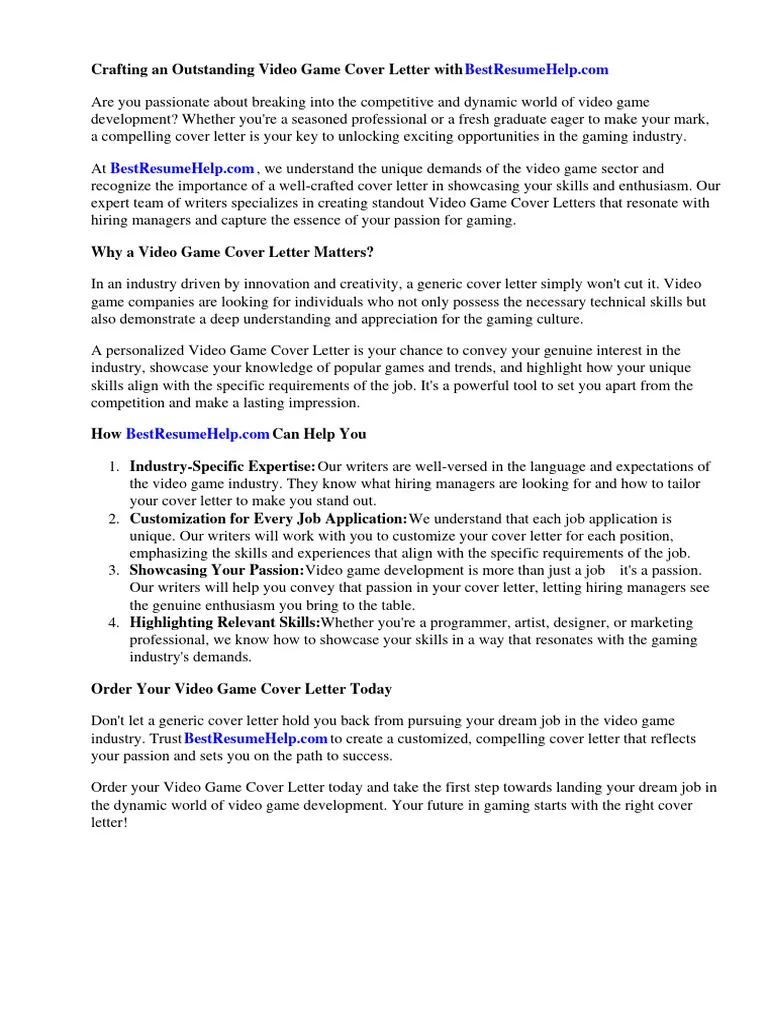
Generic and Unenthusiastic Language
Avoid using generic phrases and expressing a lack of enthusiasm. Tailor your letter to the specific job and company, and show your genuine interest in the opportunity. Avoid phrases like “I am writing to apply” and instead, write with passion and excitement.
Typos and Grammatical Errors
Typos and grammatical errors can damage your credibility. Proofread your cover letter carefully, and have someone else review it as well. Even a small mistake can create a negative impression.
Focusing Solely on Yourself
While you need to highlight your skills and experience, don’t make your cover letter all about you. Focus on how your skills and experience can benefit the company. Show how you can contribute to their success and help them achieve their goals. A balance between your skills and how you can contribute to the company’s goals is key.
The Final Steps Before Submitting
Reviewing Your Cover Letter
Before submitting your cover letter, review it carefully. Check for any errors, ensure it’s well-written, and tailored to the specific job. Make sure you’ve included all the necessary information and that your contact details are accurate. Ask a friend or colleague to review it as a final check.
Submitting Your Application
Follow the application instructions carefully. Attach your cover letter and resume as instructed. Make sure your portfolio link is easily accessible. Send your application in the appropriate format (e.g., PDF). Once your application is submitted, double-check that you received a confirmation email and that your application was received successfully.
Additional Tips for Game Artist Job Applications
Building a Strong Portfolio
Your portfolio is the most crucial part of your application. Include a diverse range of your best work, showcasing different skills and styles. Make sure your portfolio is well-organized, easy to navigate, and visually appealing. Keep your portfolio up-to-date and remove any outdated or irrelevant work. Ensure all your portfolio pieces are high-quality.
Networking and Connecting with Professionals
Networking can open doors to job opportunities. Attend industry events, connect with game artists on LinkedIn, and join online communities. Don’t be afraid to reach out to artists whose work you admire and ask for advice. Building relationships can lead to valuable connections and job referrals. Networking will provide connections to learn about new positions.
Following Up After Submitting Your Application
If you haven’t heard back within a reasonable timeframe (usually one to two weeks), send a polite follow-up email. Reiterate your interest in the position and inquire about the status of your application. This shows your continued interest and professionalism. However, avoid sending multiple follow-up emails, as this can be perceived as pushy.
